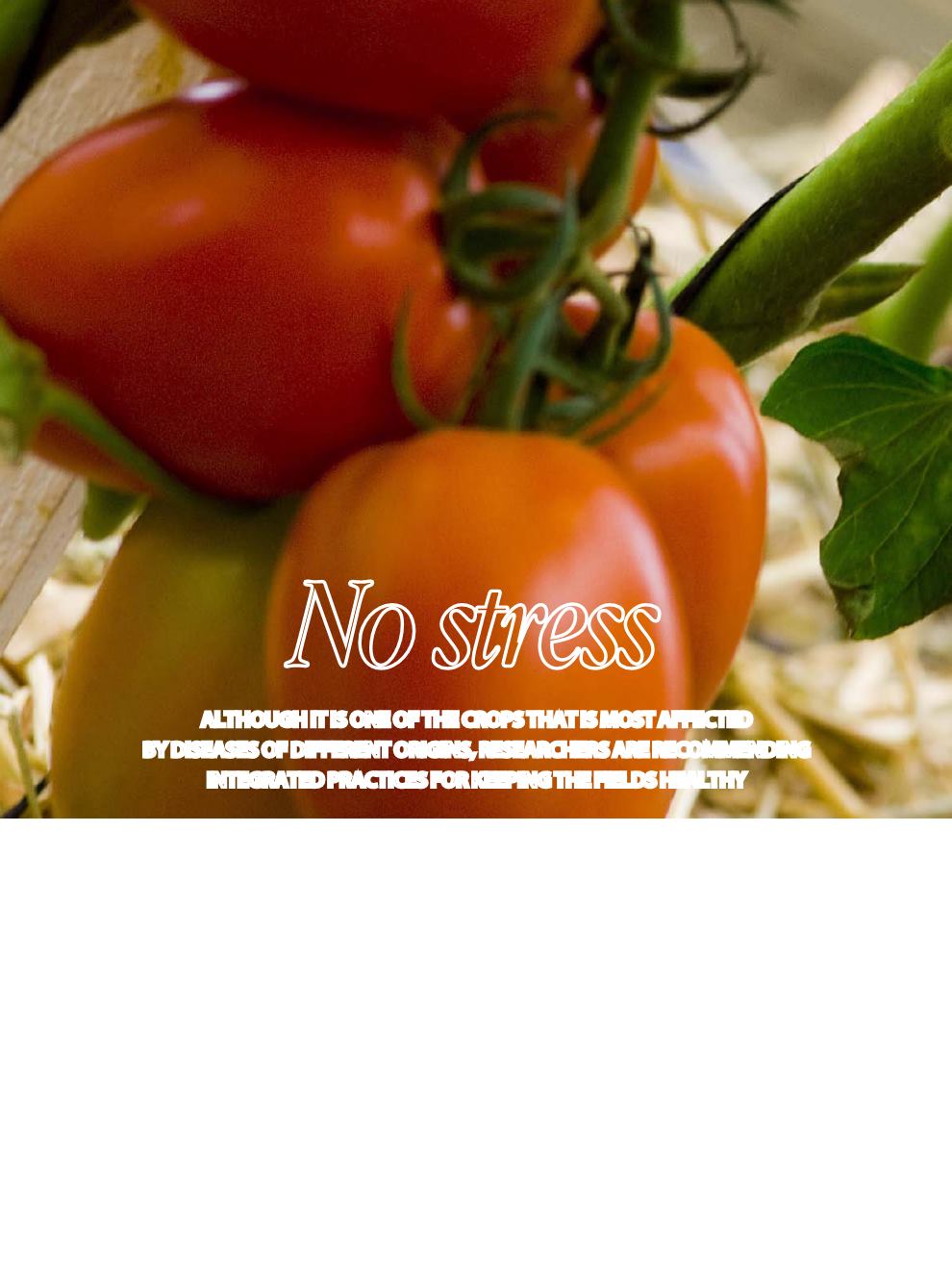
68
No stress
Although it isoneofthecropsthat ismostaffected
bydiseasesofdifferentorigins, researchersarerecommending
integratedpracticesforkeepingthefieldshealthy
Tomatoes are the most popular vegeta-
ble on the Brazilian dining tables, a fact ex-
plains why they are grown in all Brazilian
regions. Together, the production of fresh
and industrial tomatoes reaches about 3
million tons a year. In order to keep their
fields healthy and productive to meet peo-
ple’s demand for this vegetable, it is utter-
ly necessary for the farmers to keep a close
watch on the main problems that could in-
terfere with the performance of the crop,
including diseases caused by fungi, bacte-
ria, viruses and other physiological distur-
bances. All over the world, some 200 dis-
eases and physiological disturbances have
already been reported to have affected to-
mato crops, and likely to cause damage
and losses to the growers.
Researcher Carlos Alberto Lopes, from
Embrapa Vegetables, says that in the case
of bacterial diseases one of the biggest
concerns of the growers is the disease
known as bacterial wilt, or tomato wilt,
which equally affects other solanaceous
crops in tropical and subtropical regions.
“Control is very difficult because of the
survival ability of this soil-borne disease”,
the agronomist justifies. In Brazil, the dis-
ease is a limiting factor for the produc-
tion of table tomatoes during the rainy
summer seasons in the Southeast and
Center-West and, during most of the year,
in the North and Northeast, once warm
temperatures and high soil moisture lev-
els are determining conditions that turn
the epidemics more serious.
With regard to fungi, these microorgan-
isms are responsible for the biggest num-
ber of plant diseases, and are viewed as the
culprits of the tomato crops. Approximately
15% of the production costs are attributed
to the use of fungicides in the fight against
the diseases caused by this pathogen group.
According to agronomic engineer Ailton
Reis, soil-borne fungi are the most difficult
to control and require integrated manage-
ment practices. “Currently, a great concern
in the cerrado region is the arrival Fusarium
Wilt. It is caused by race 3 of Fusarium, and
in Brazil no industrial tomato cultivars are
resistant to the disease”, he explains.


